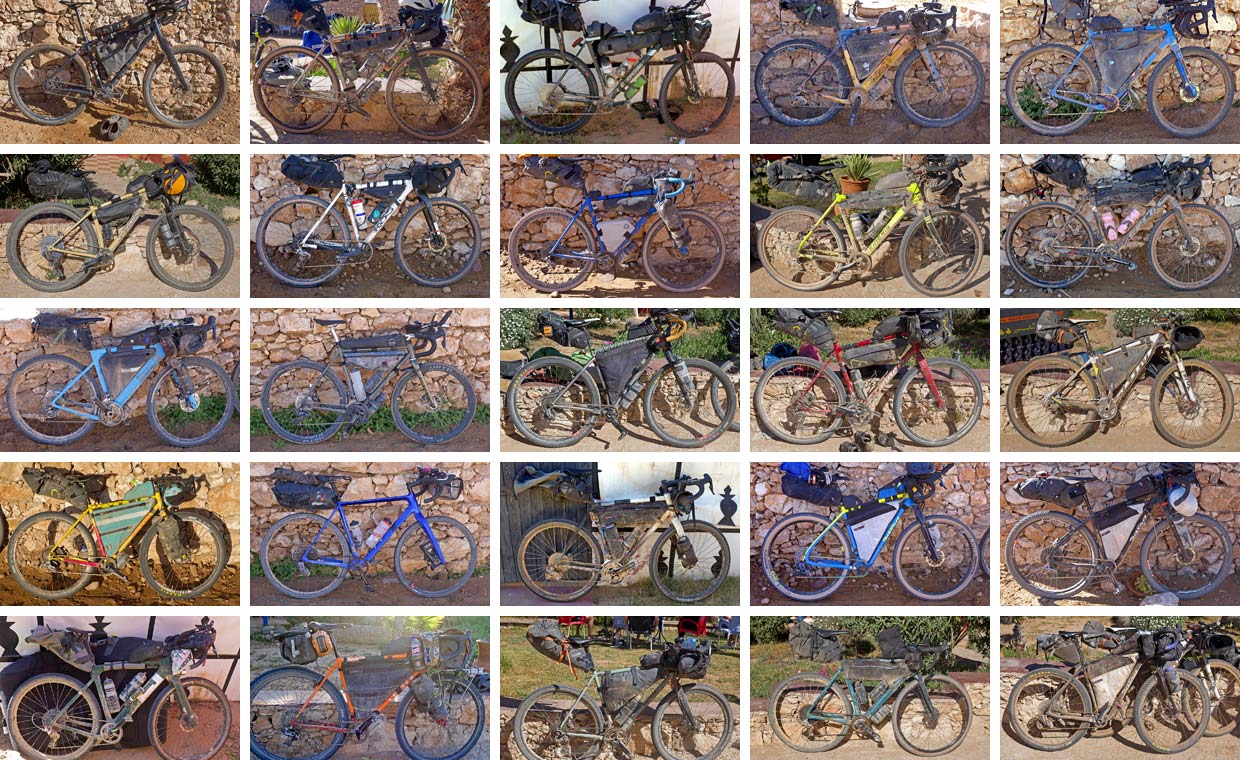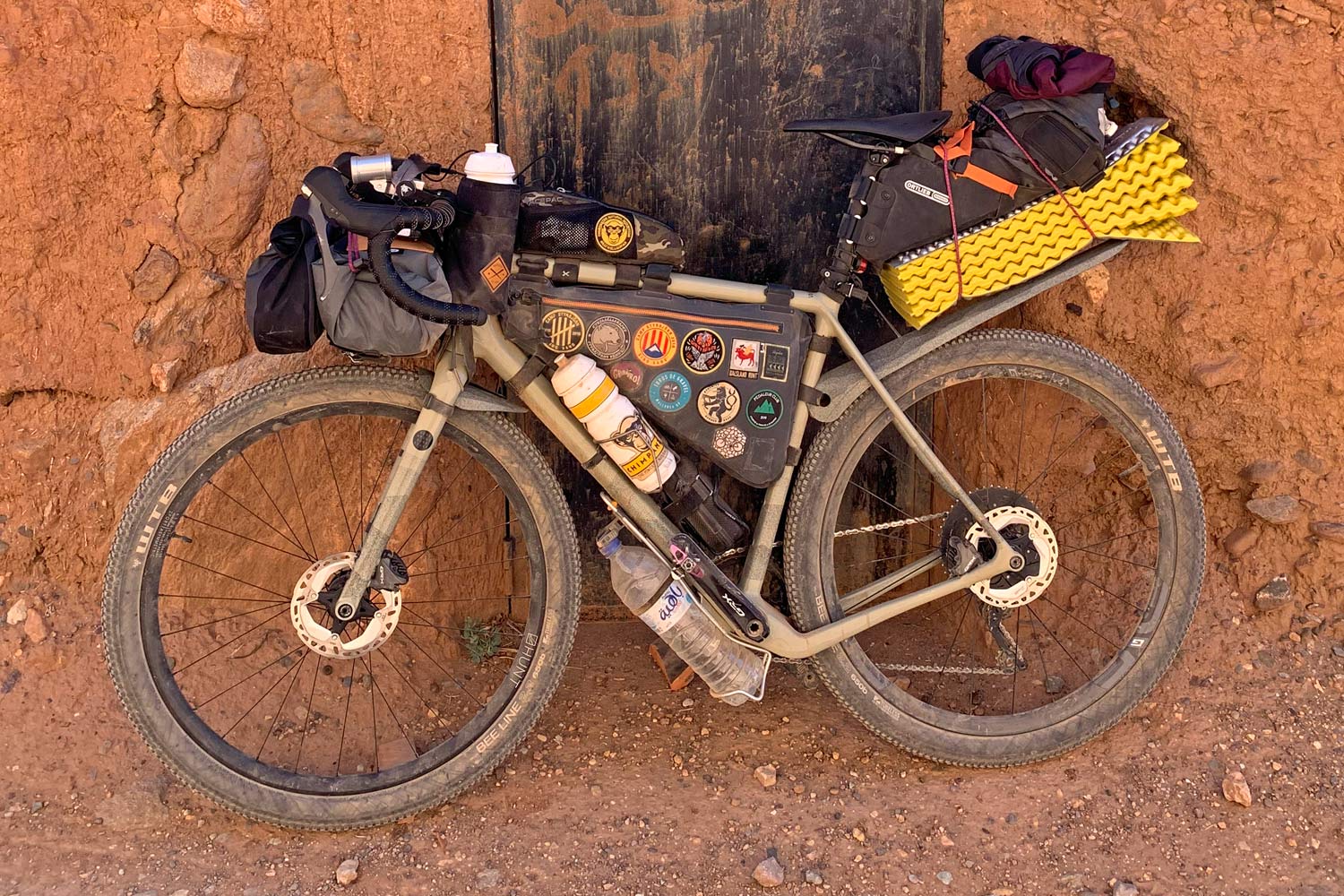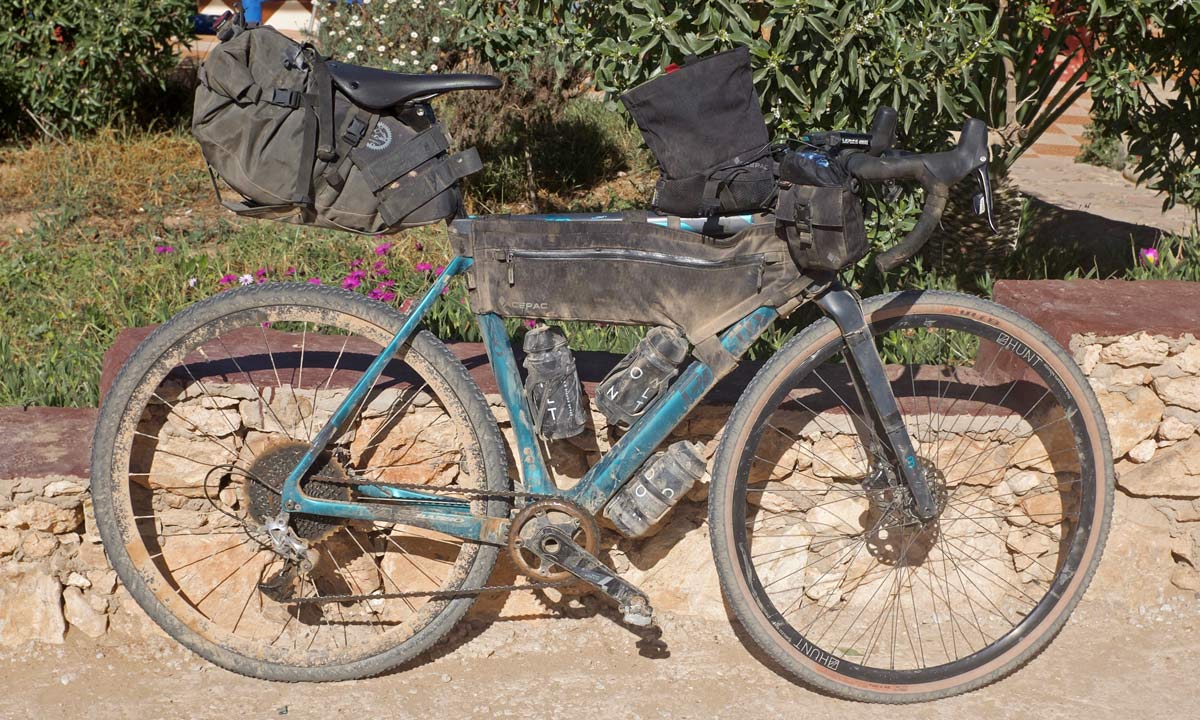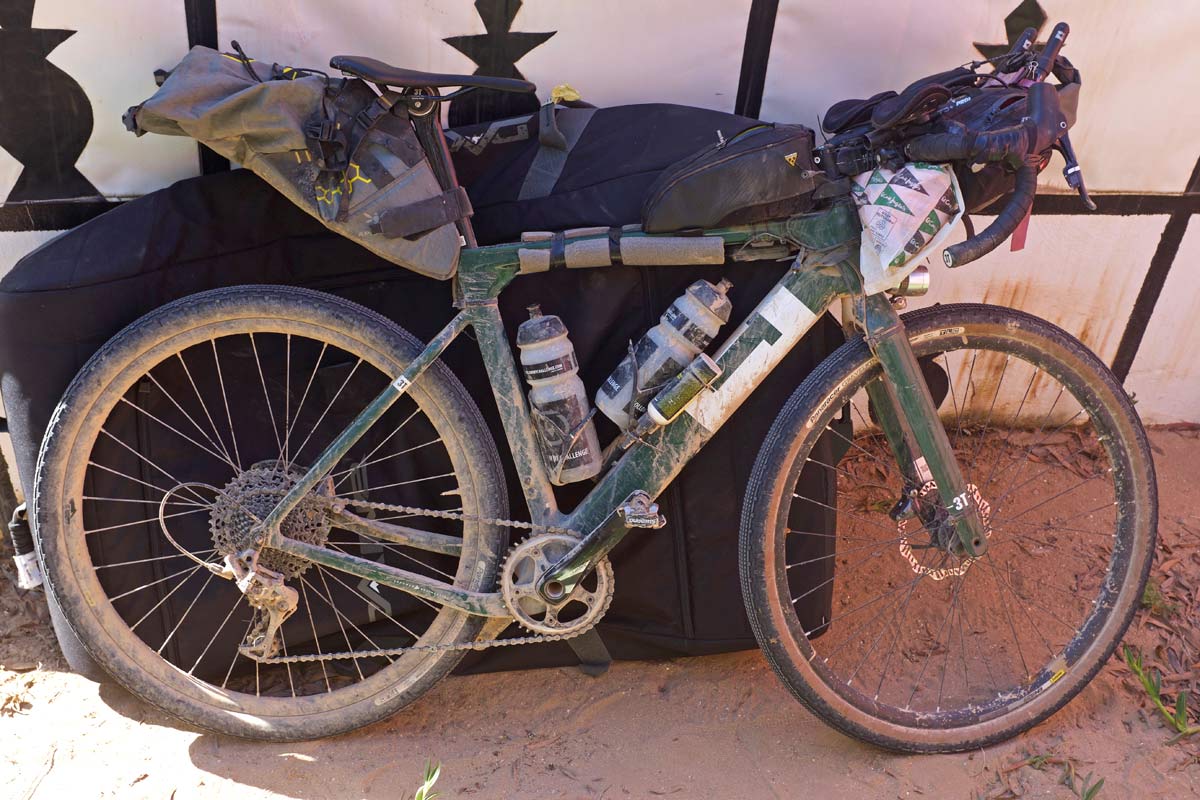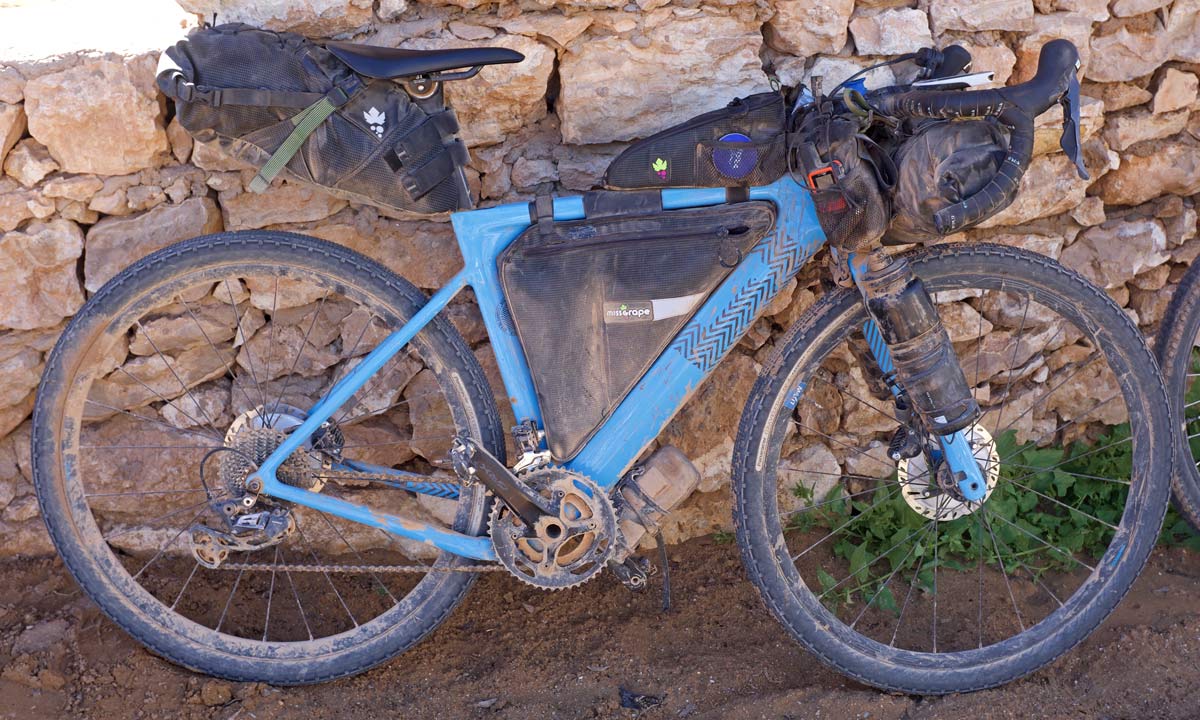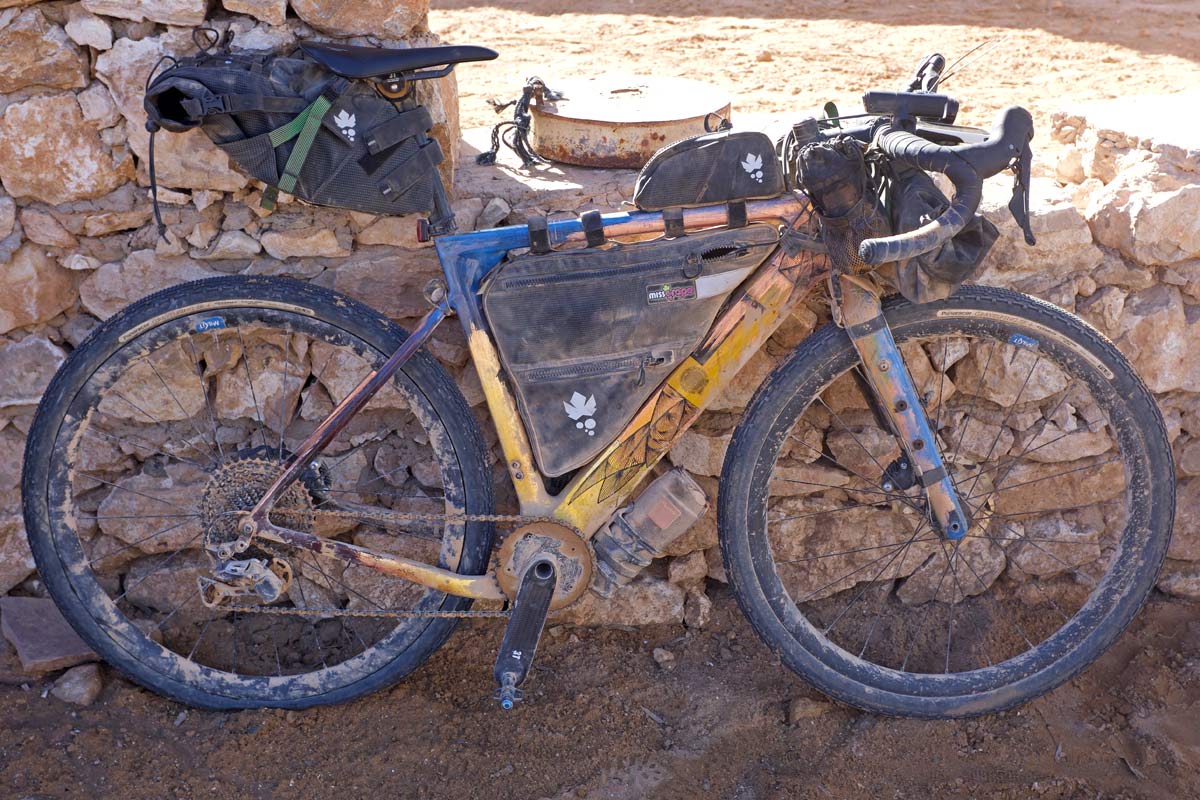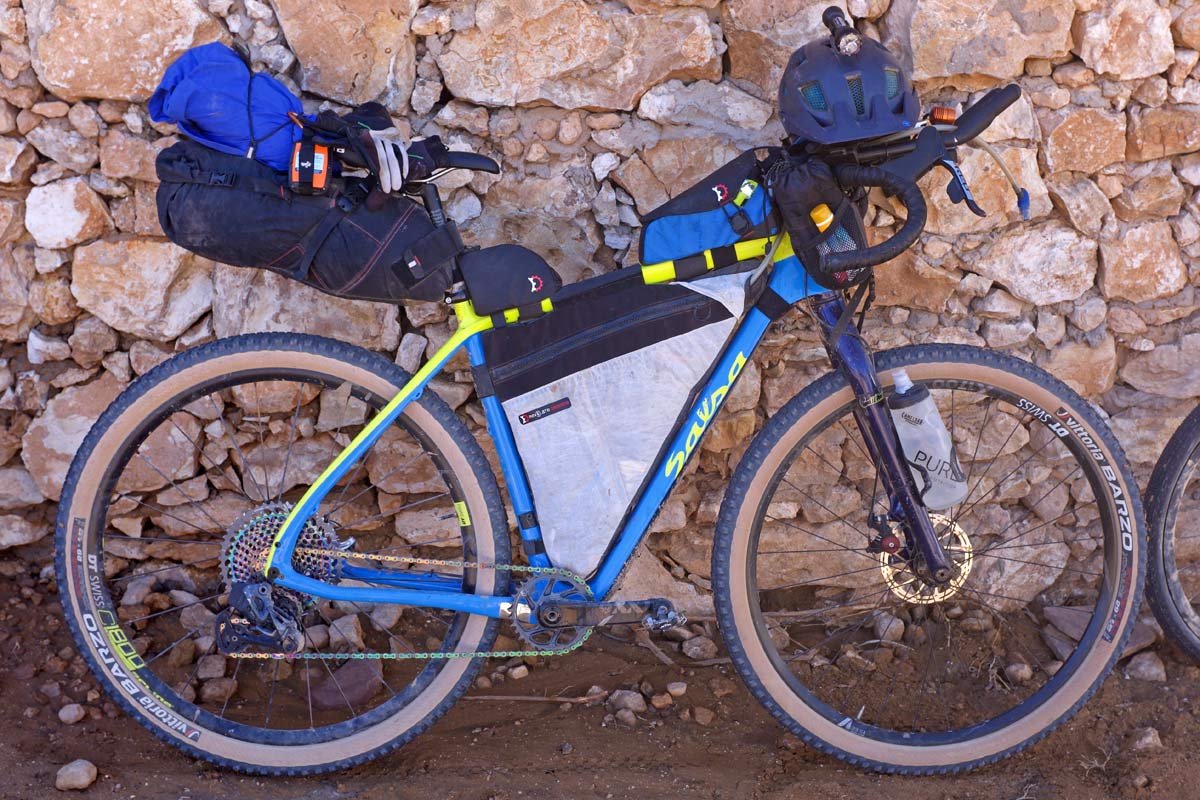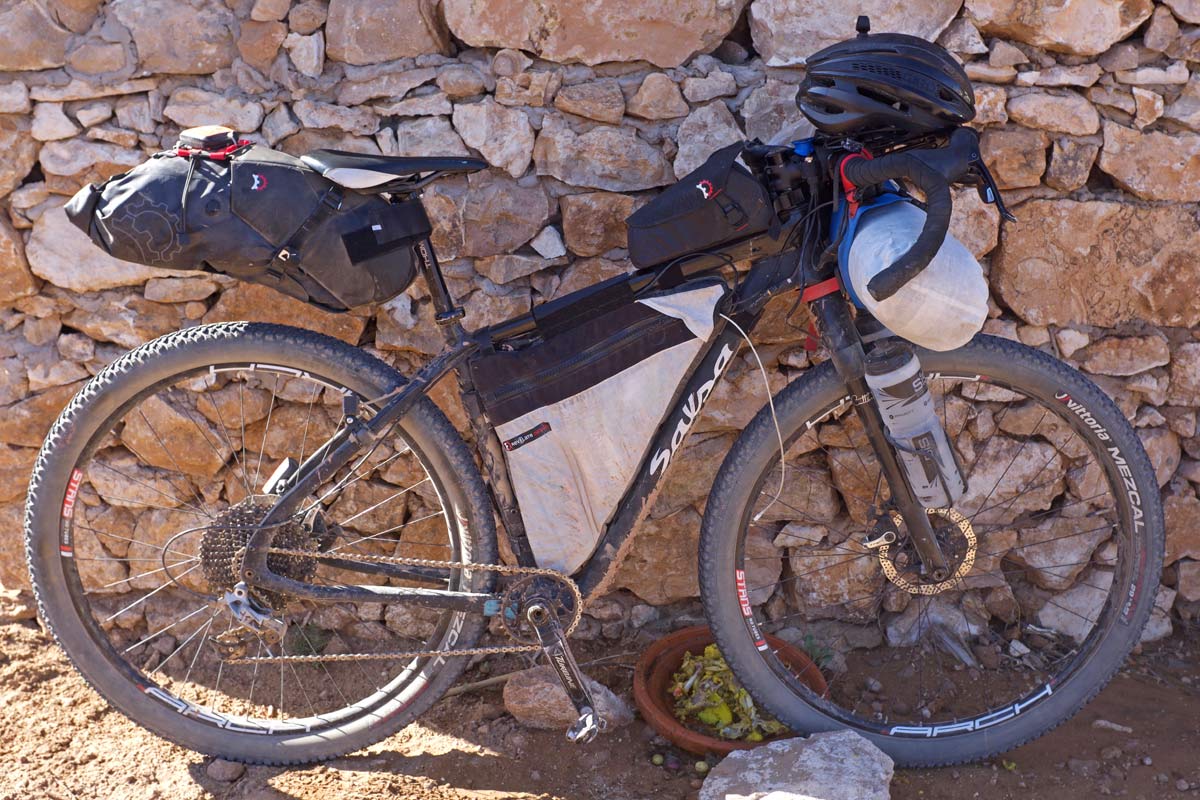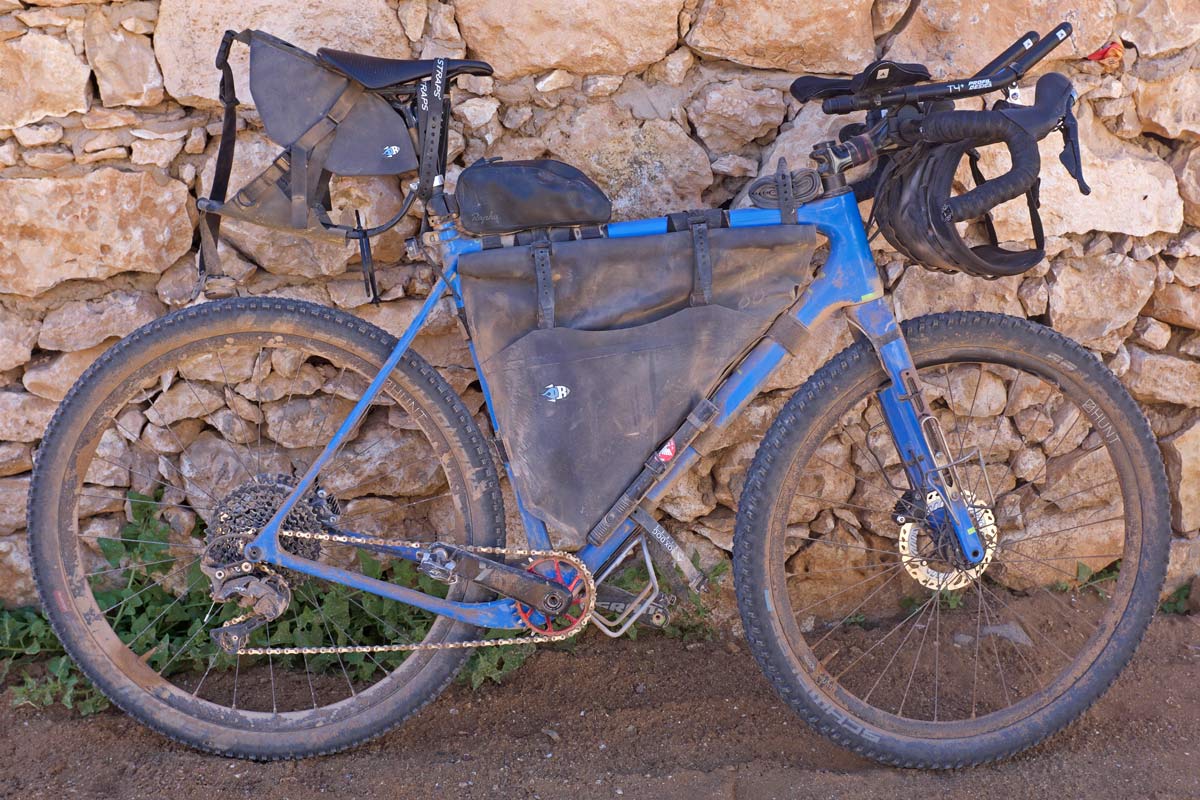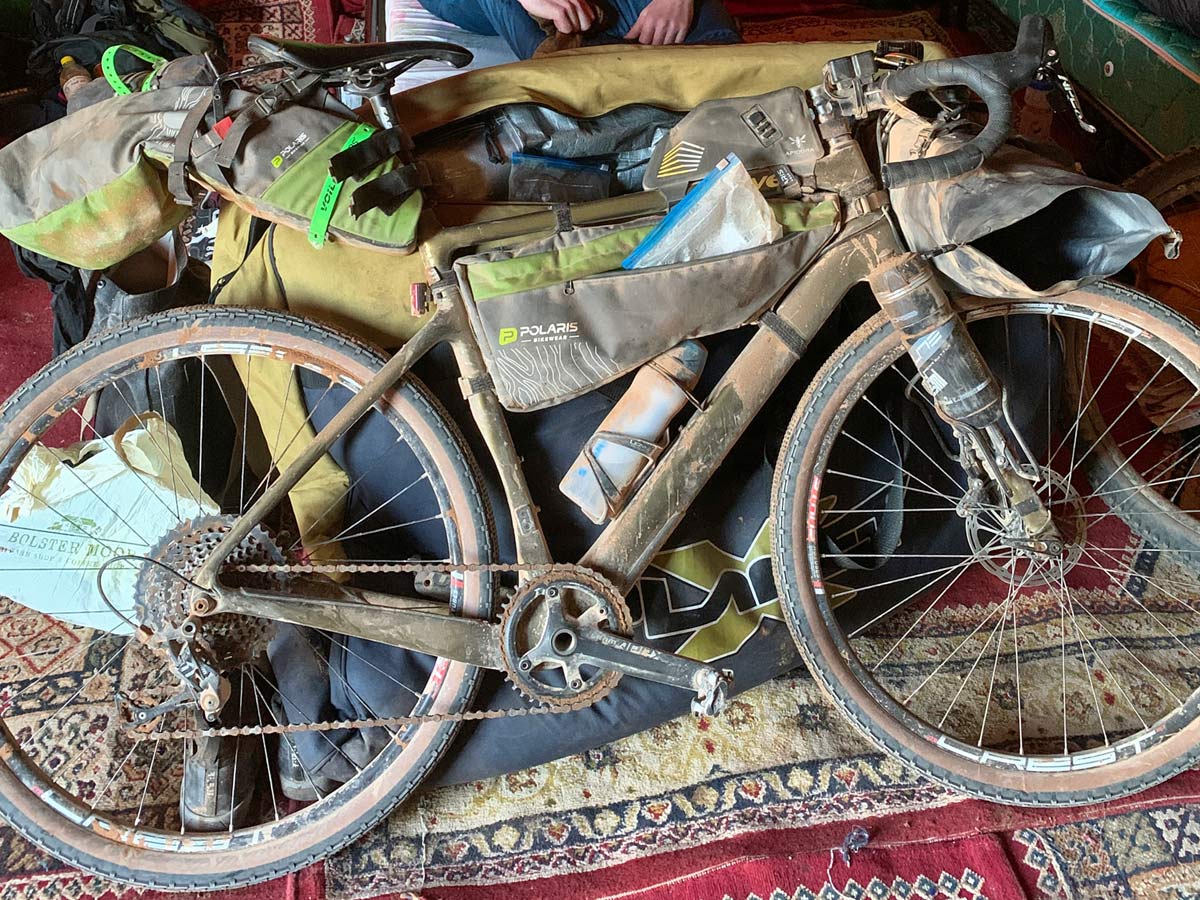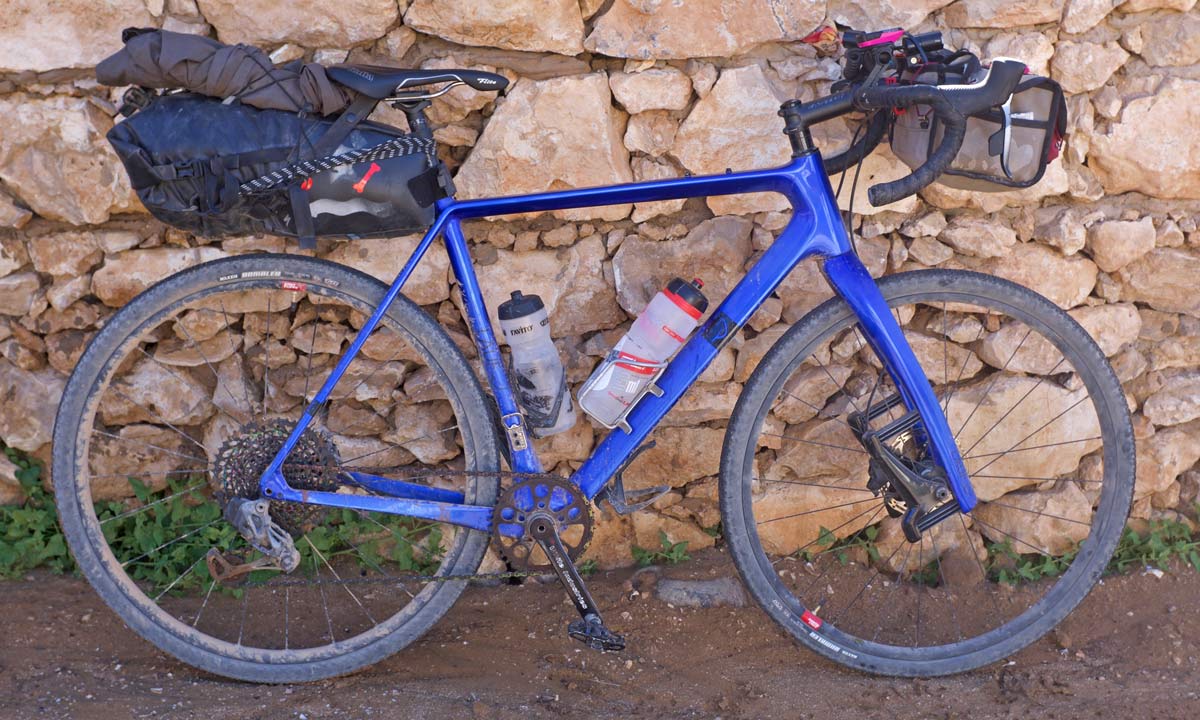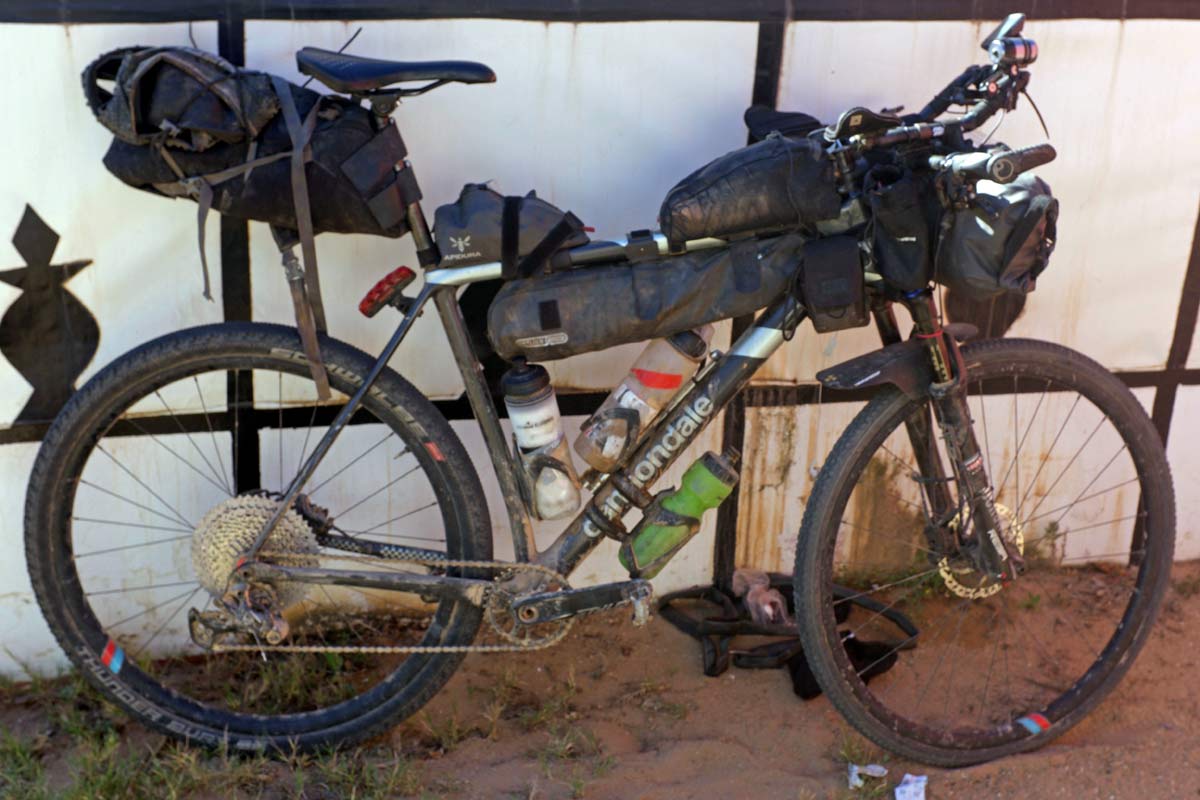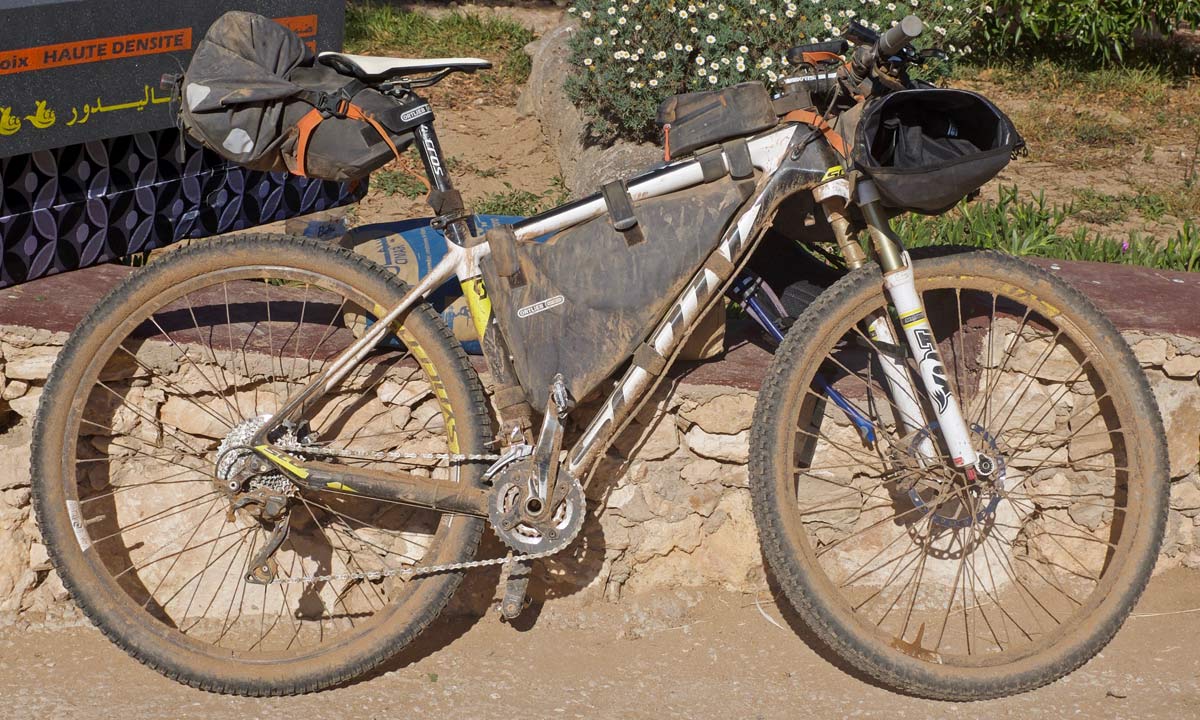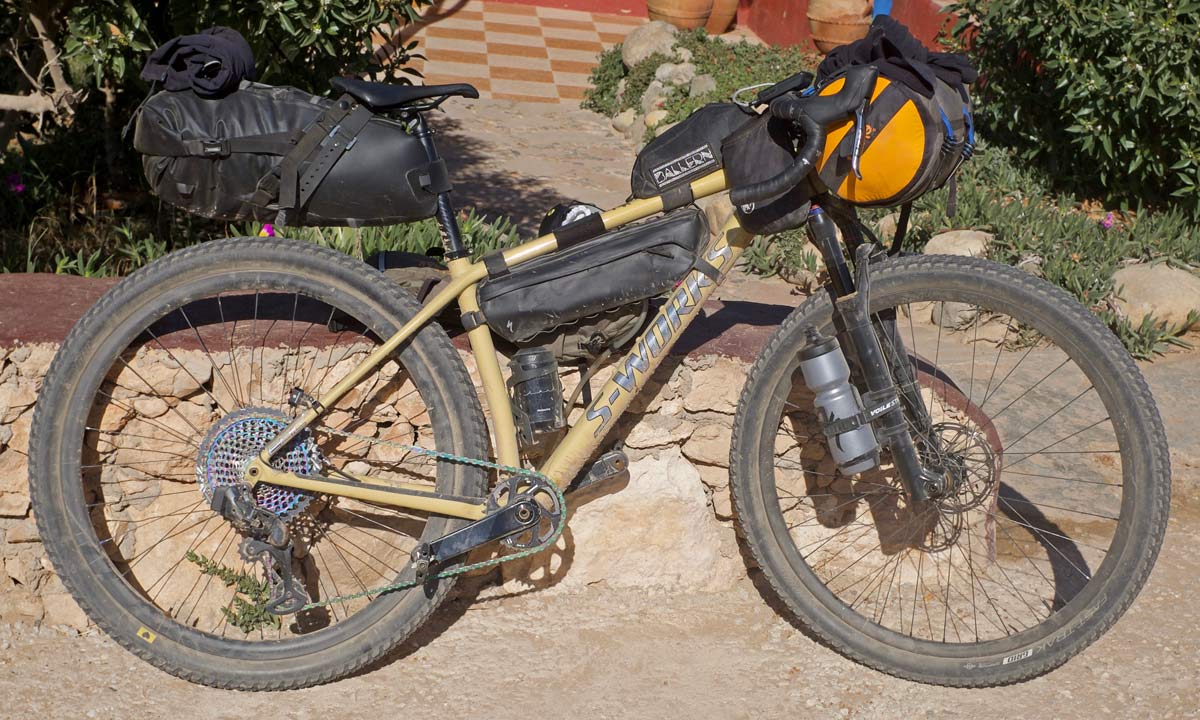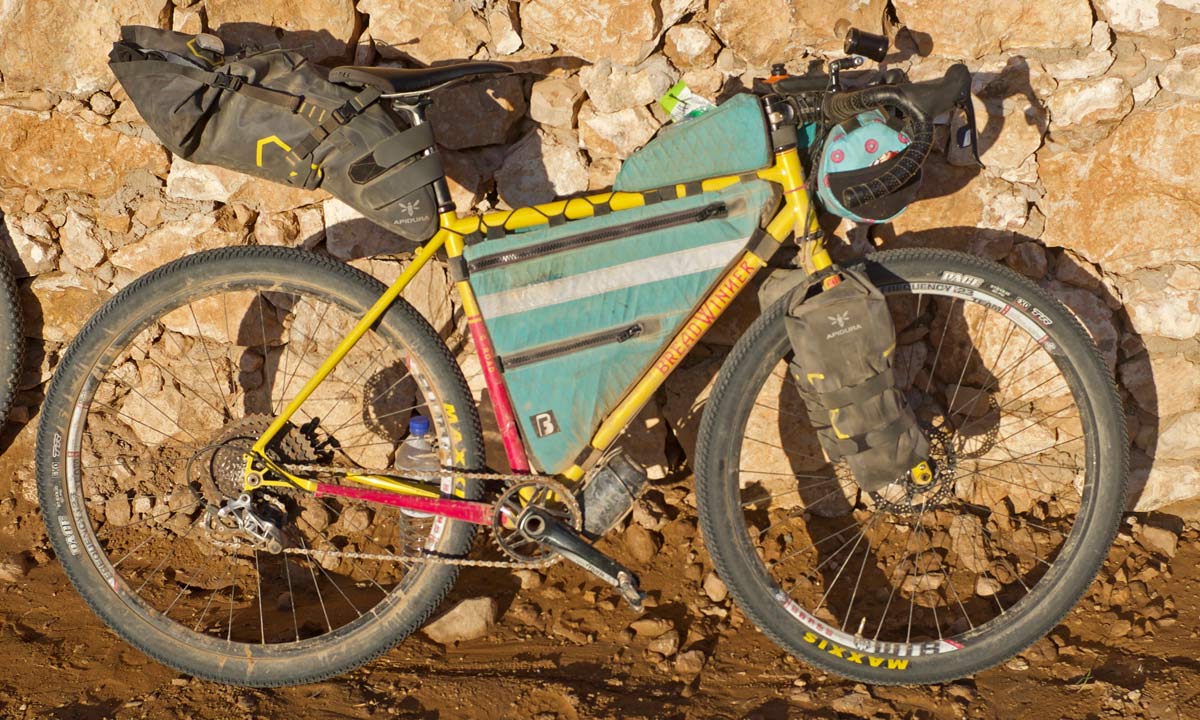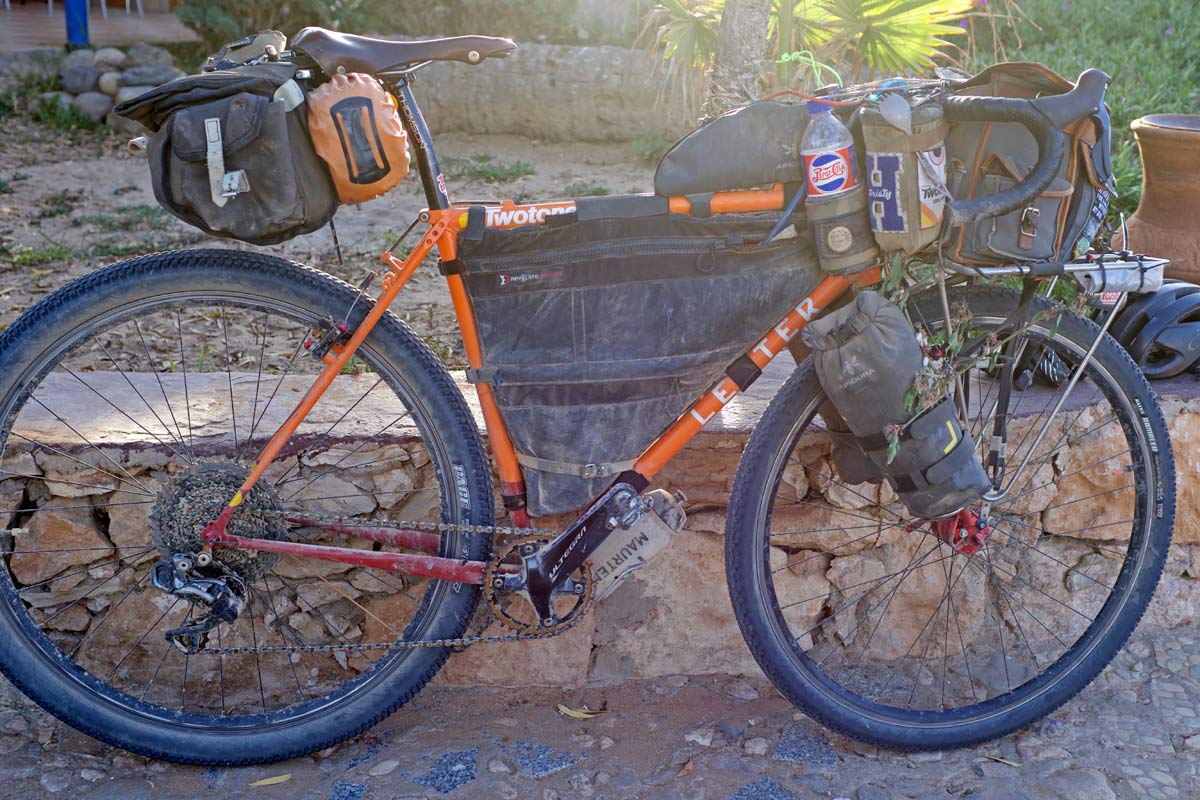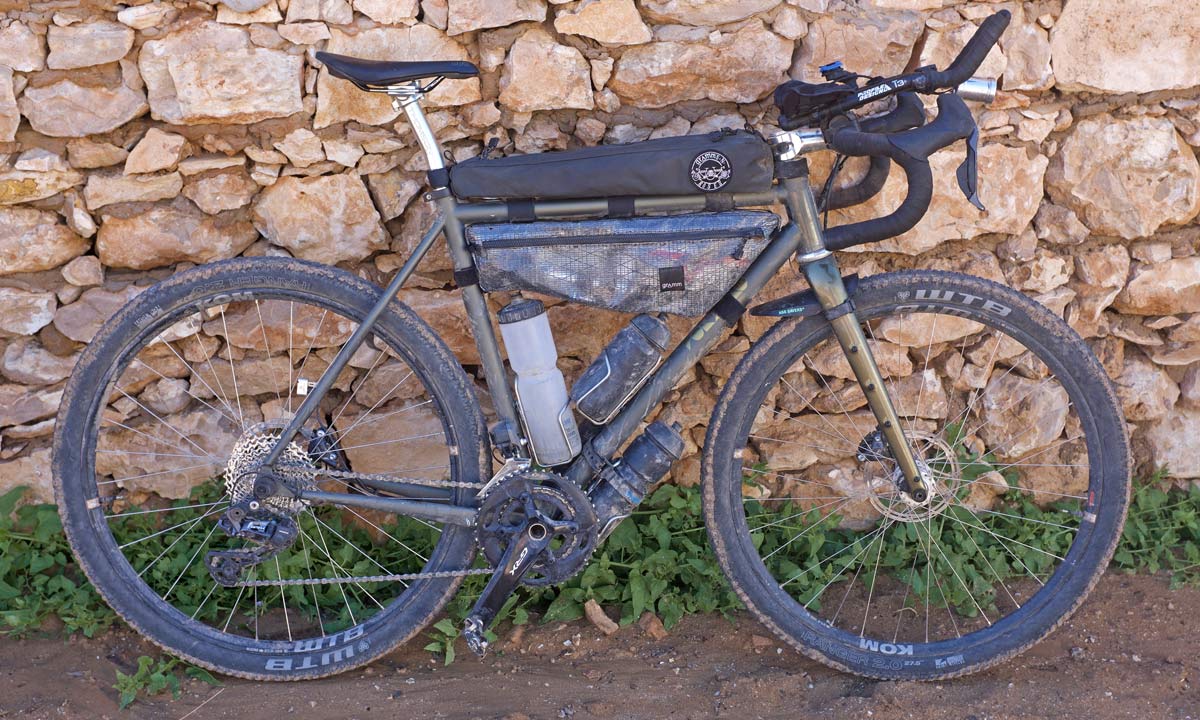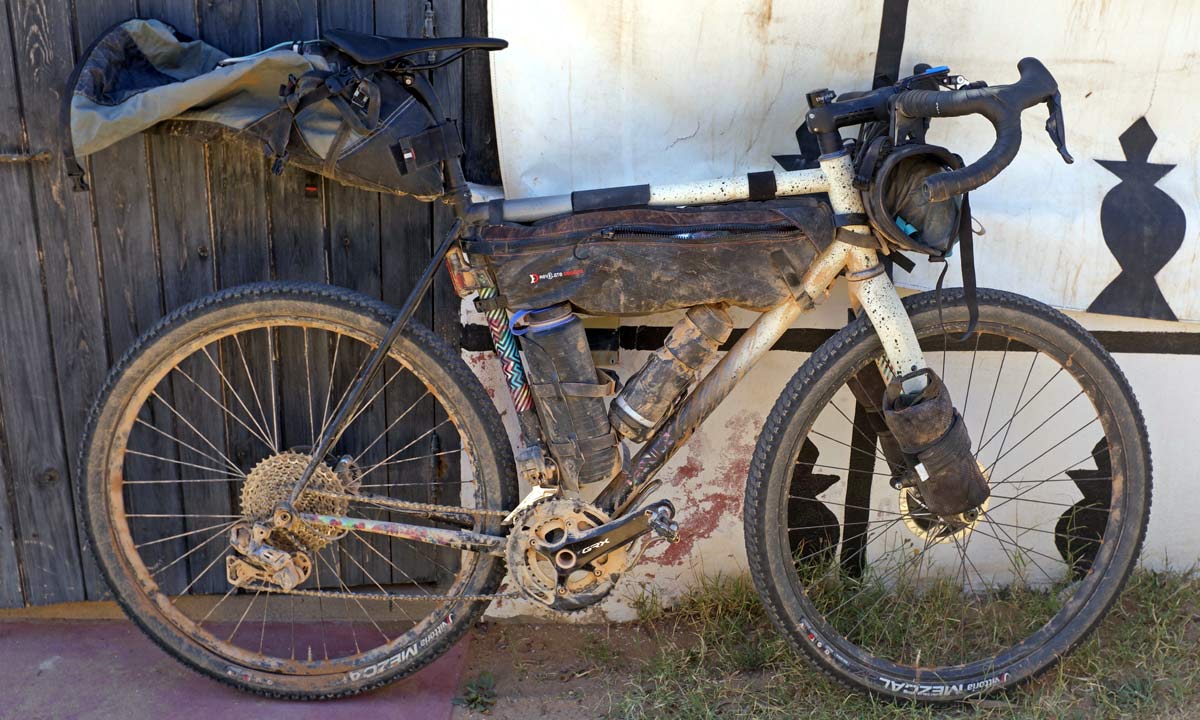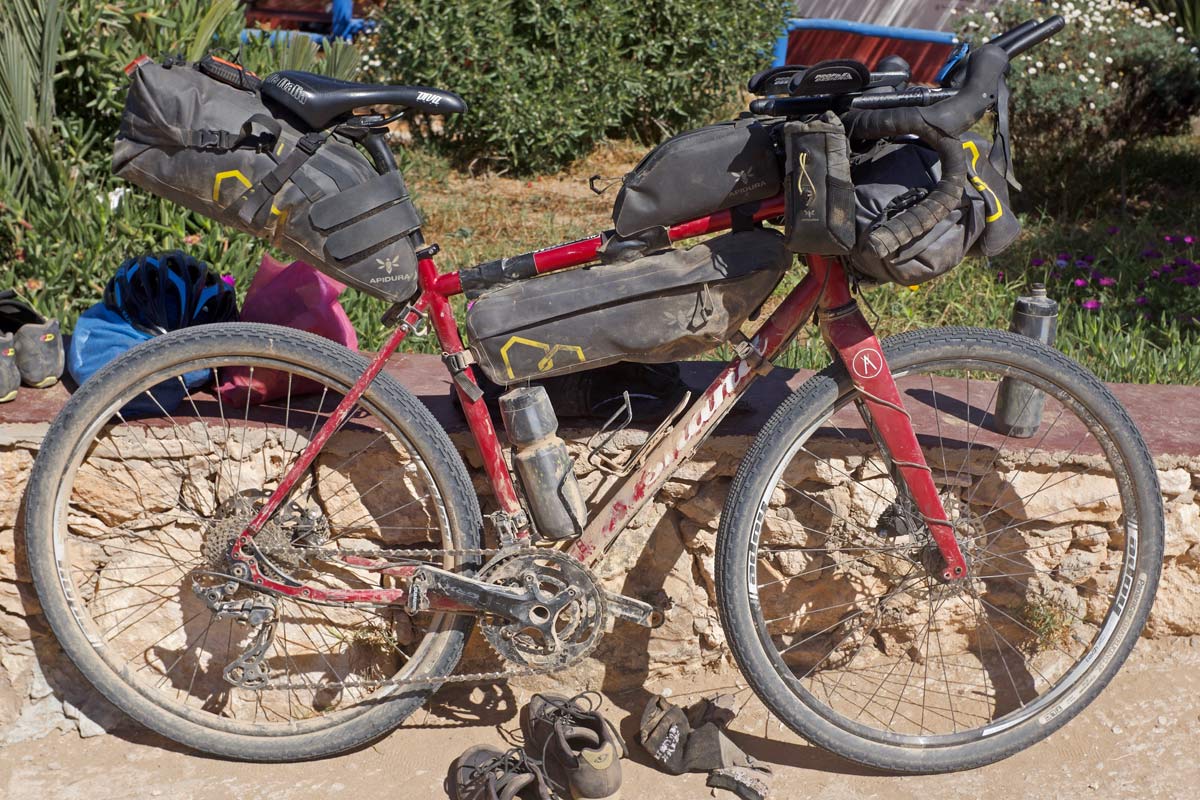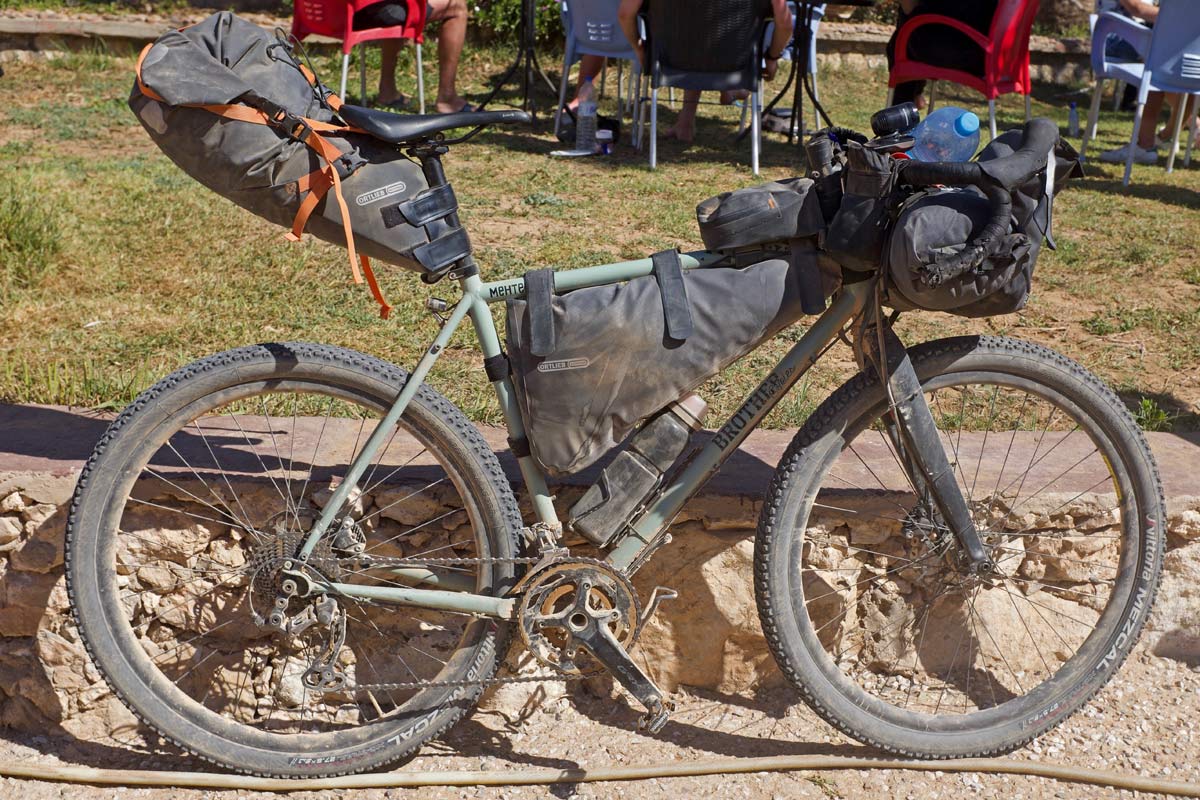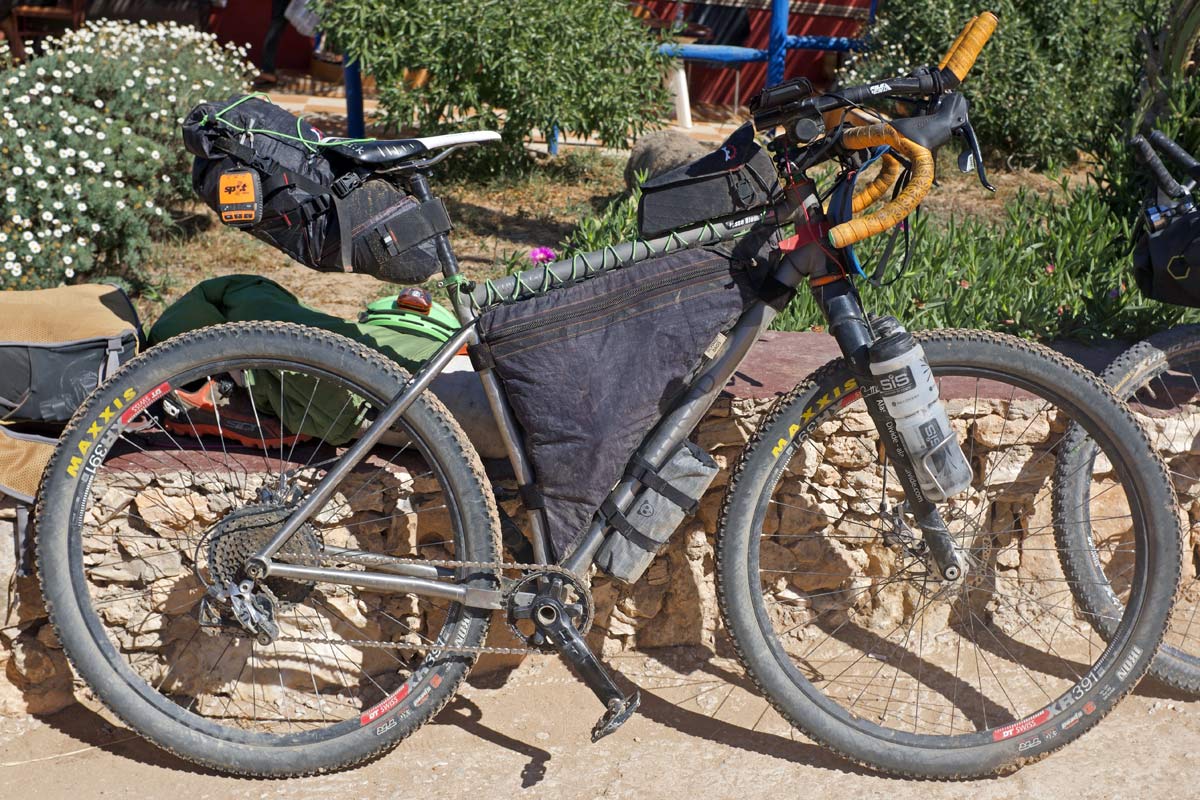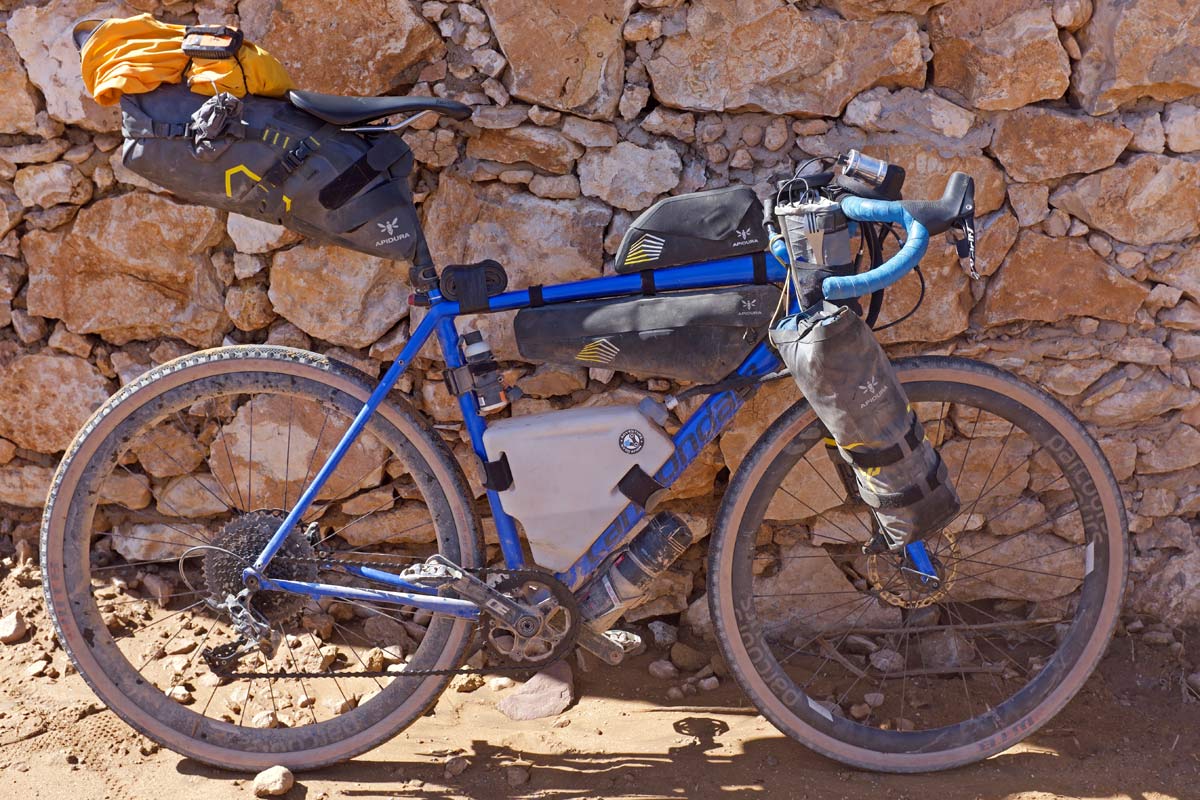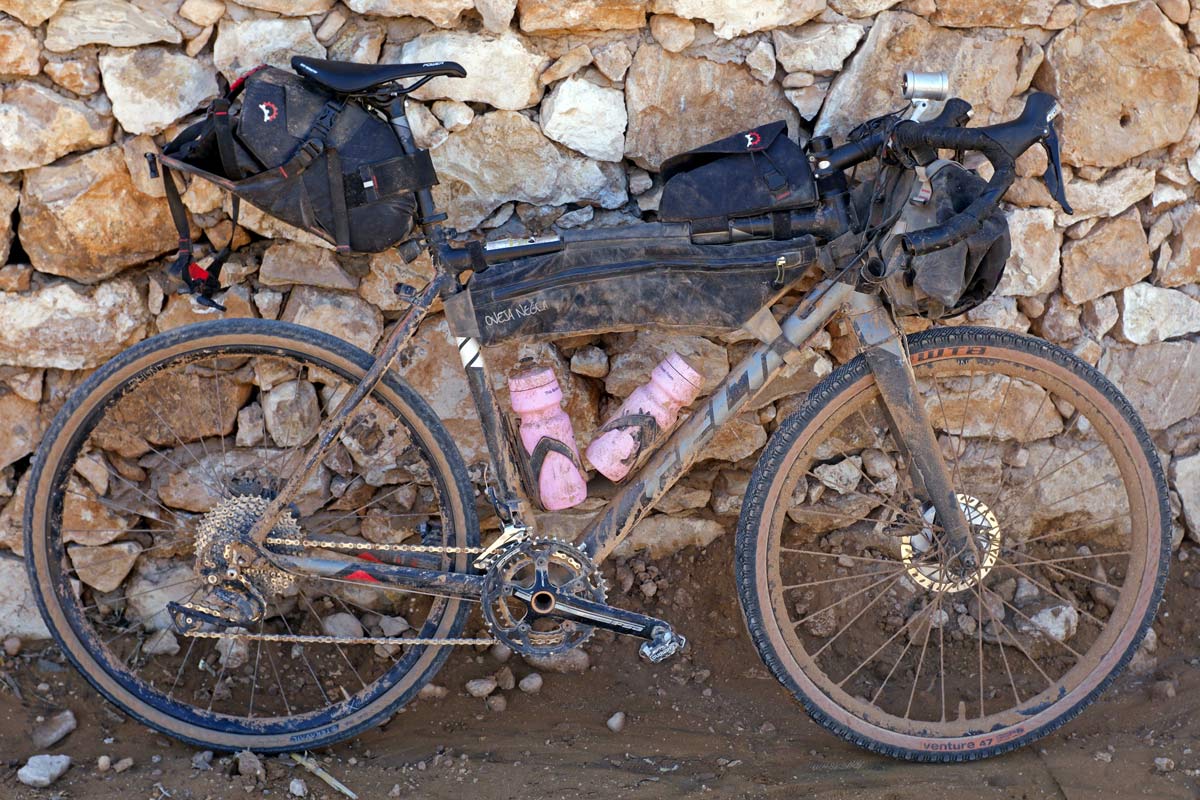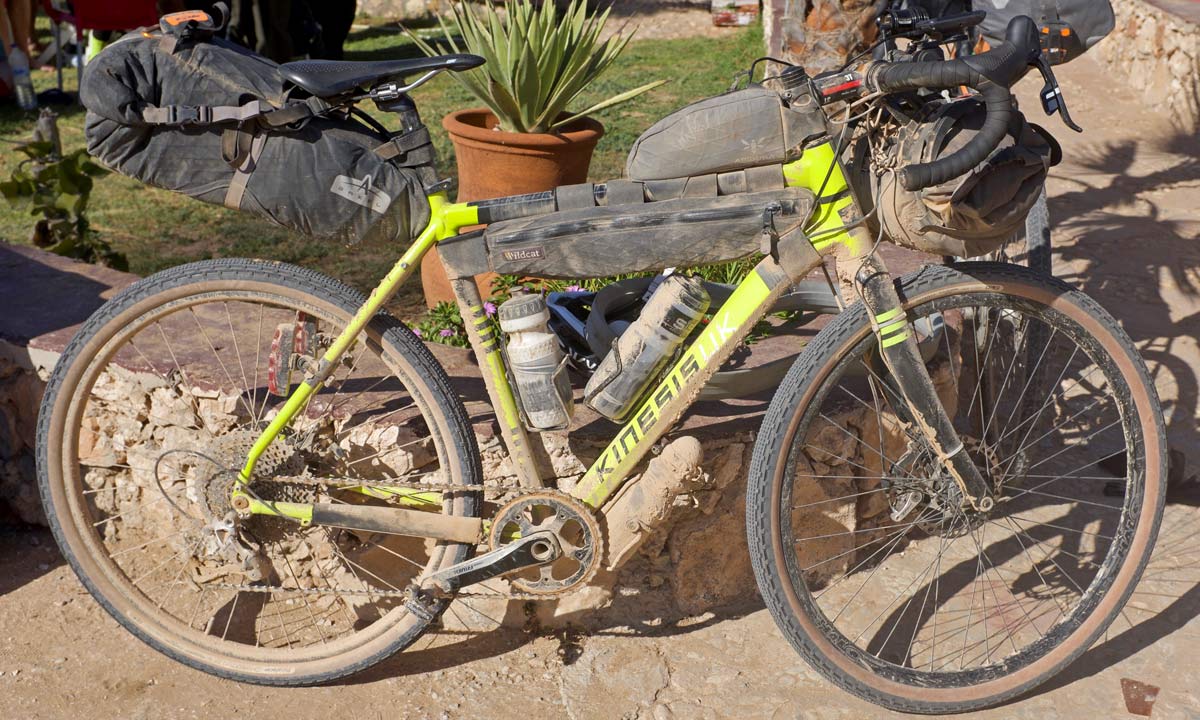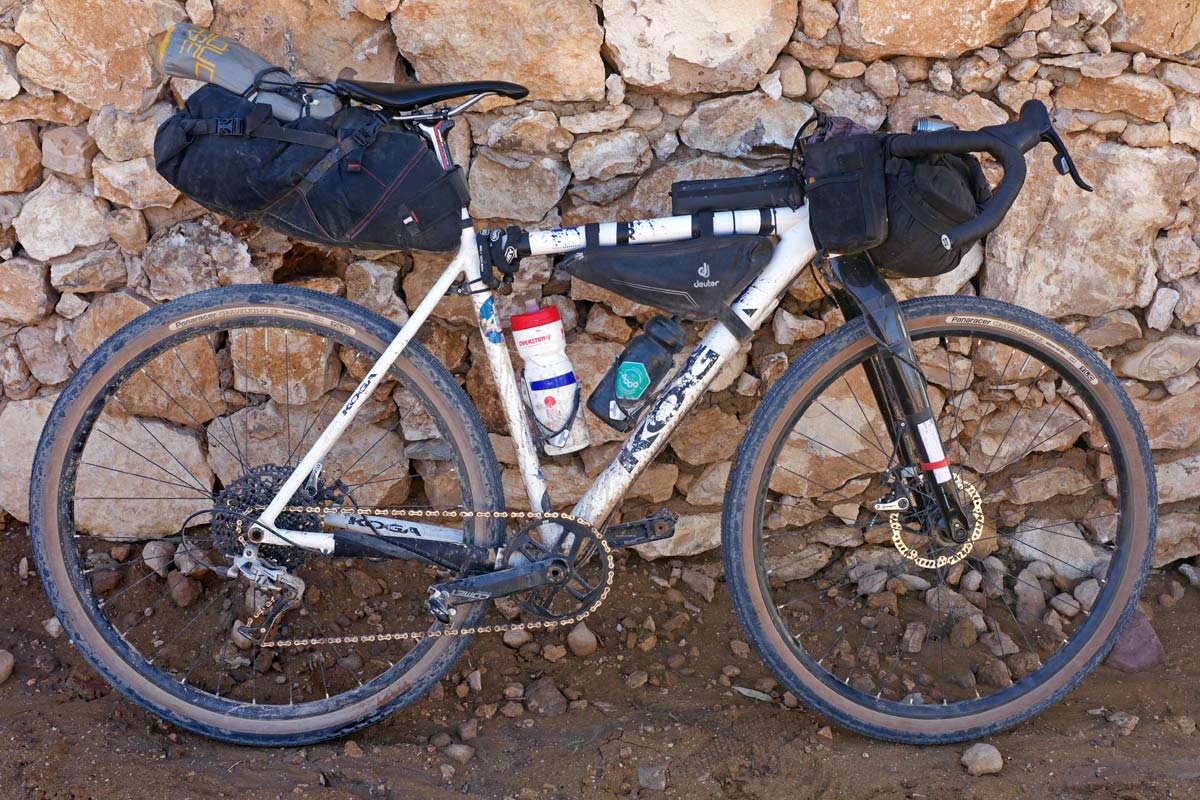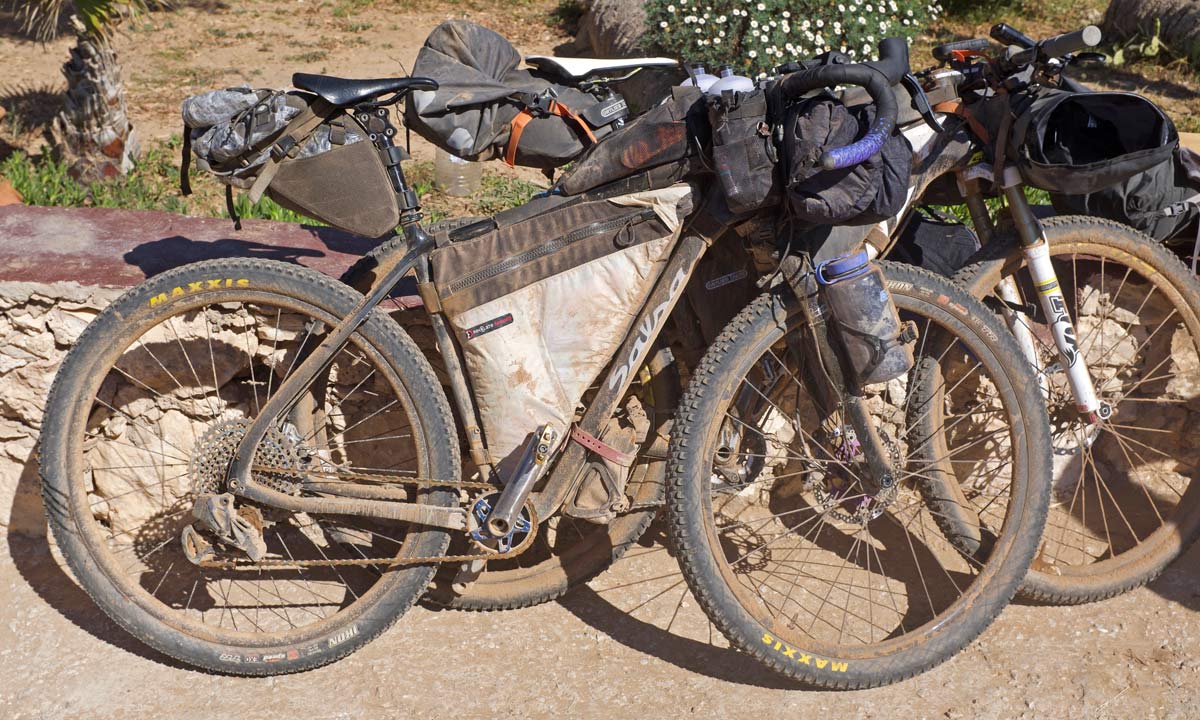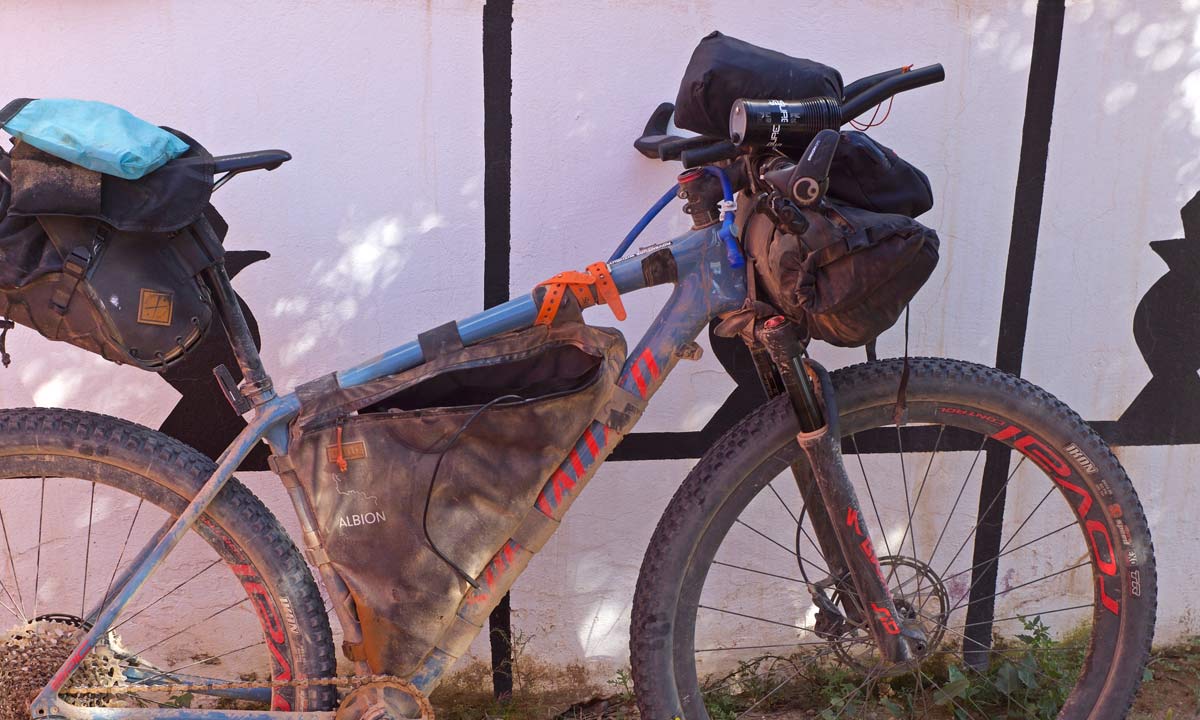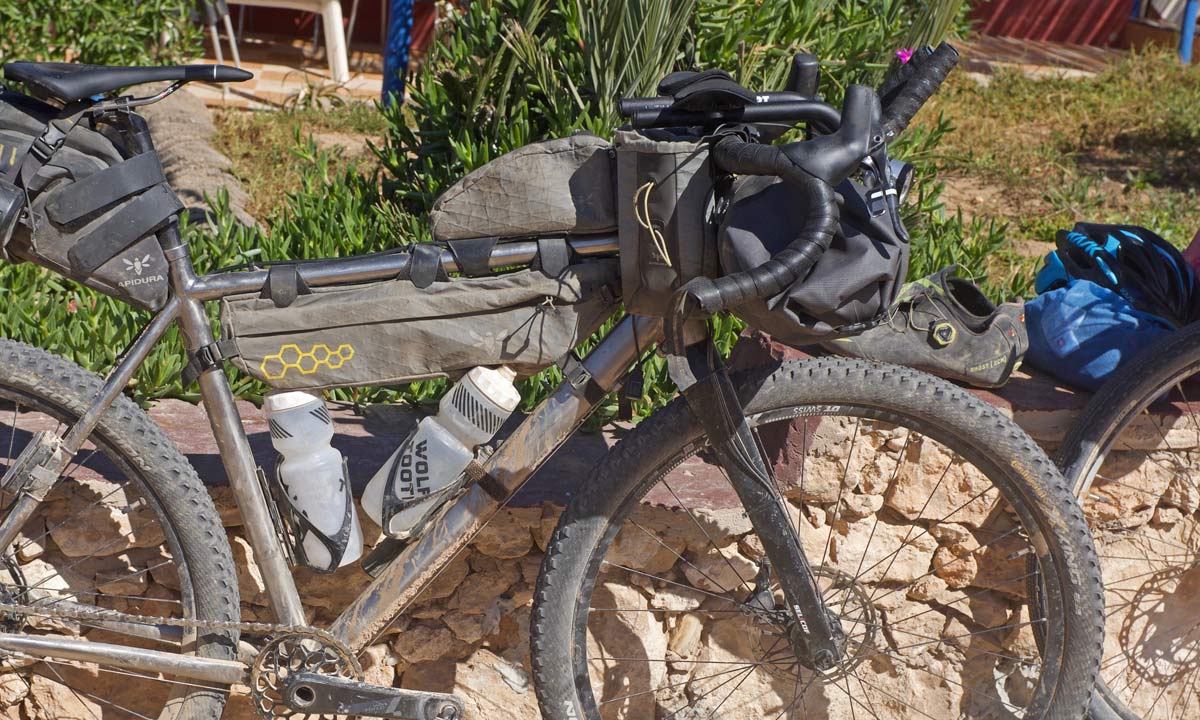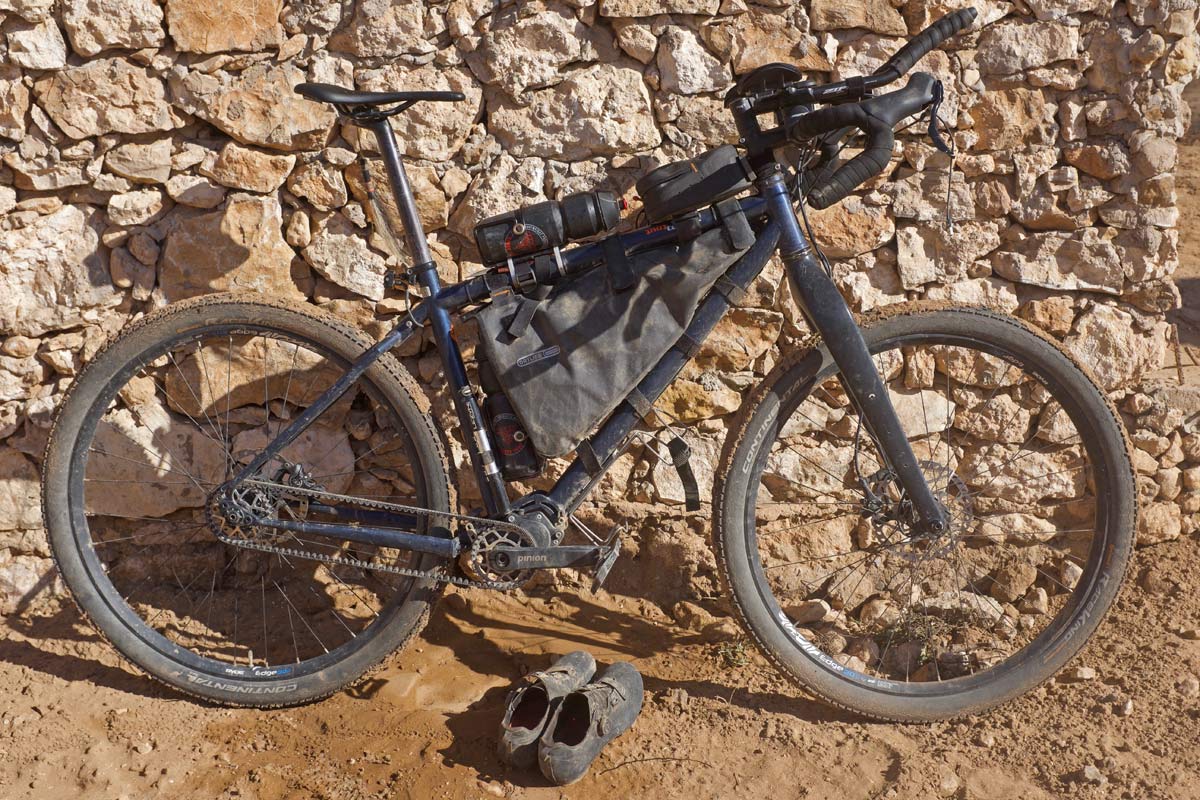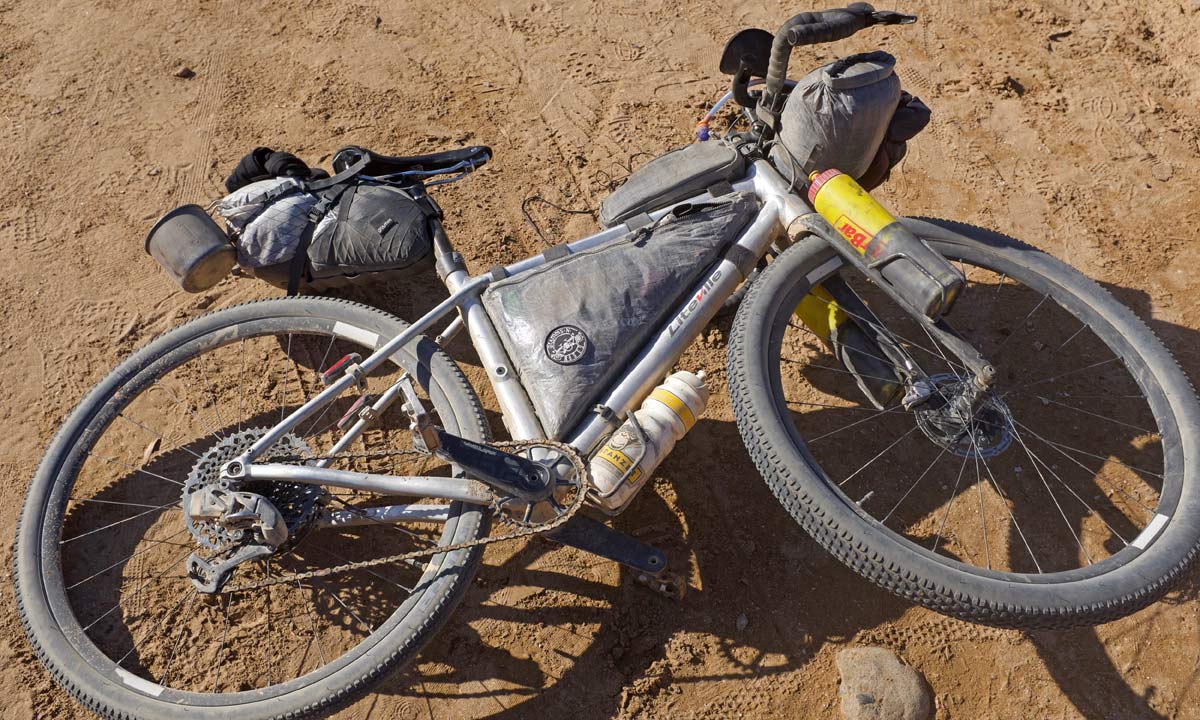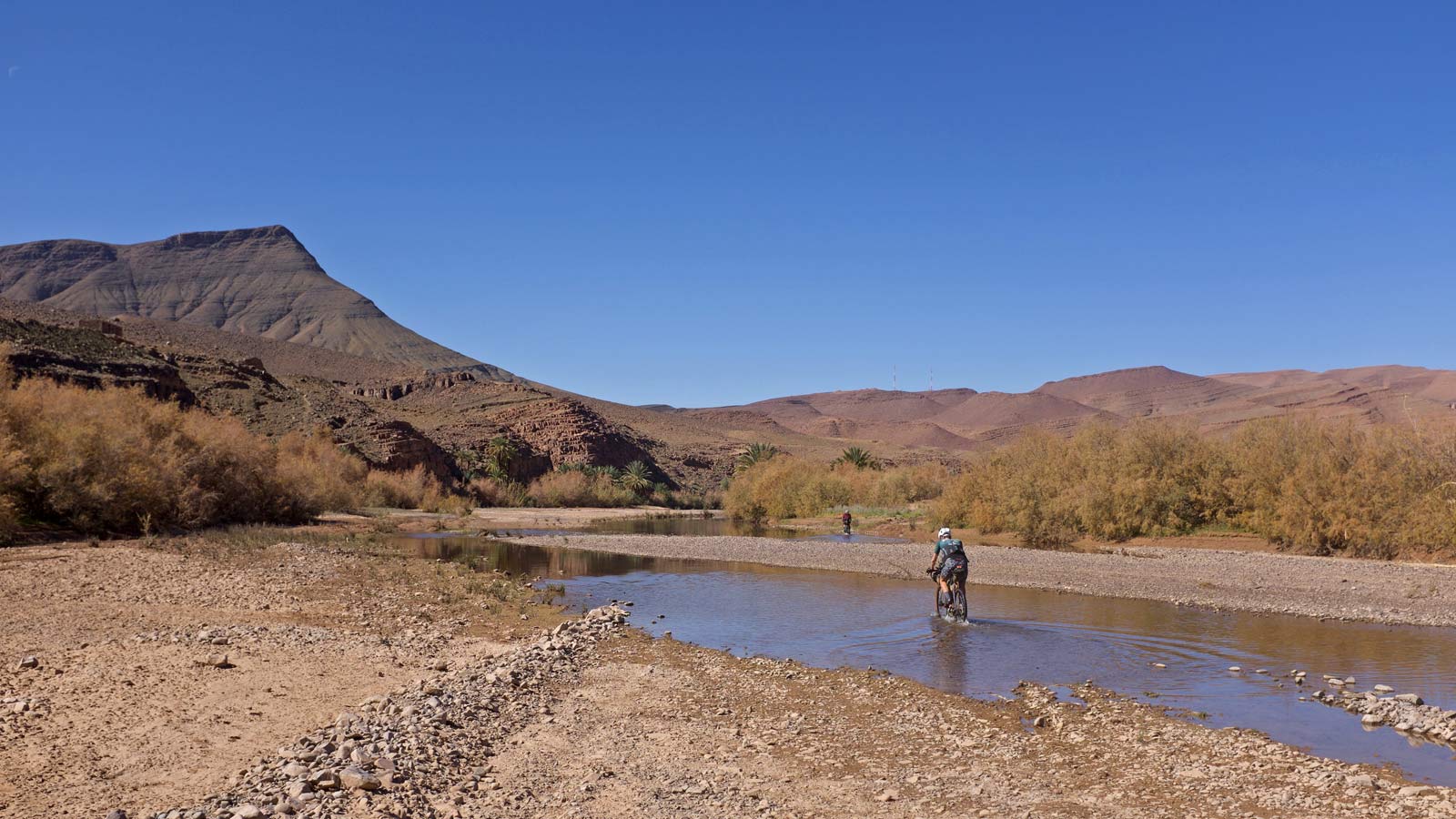Last month’s Atlas Mountain Race, saw 192 cyclists on 192 different adventure bike setups. Our friend The Chimp was one of them and documented more than thirty different bike setups, including his own. Some rode full carbon gravel bikes bordering on all-road, others carbon XC mountain bikes. There were just as many rigid steel, aluminum & titanium gravel bikes. And more different cockpit and bikepacking bag setups than you could shake a stick at. Oh, and only 64% of the starters finished. So, which setup do you think would be best for you? The Chimp shares his thoughts…
Bikes of the AMR bunch: gravel adventure race bike setups
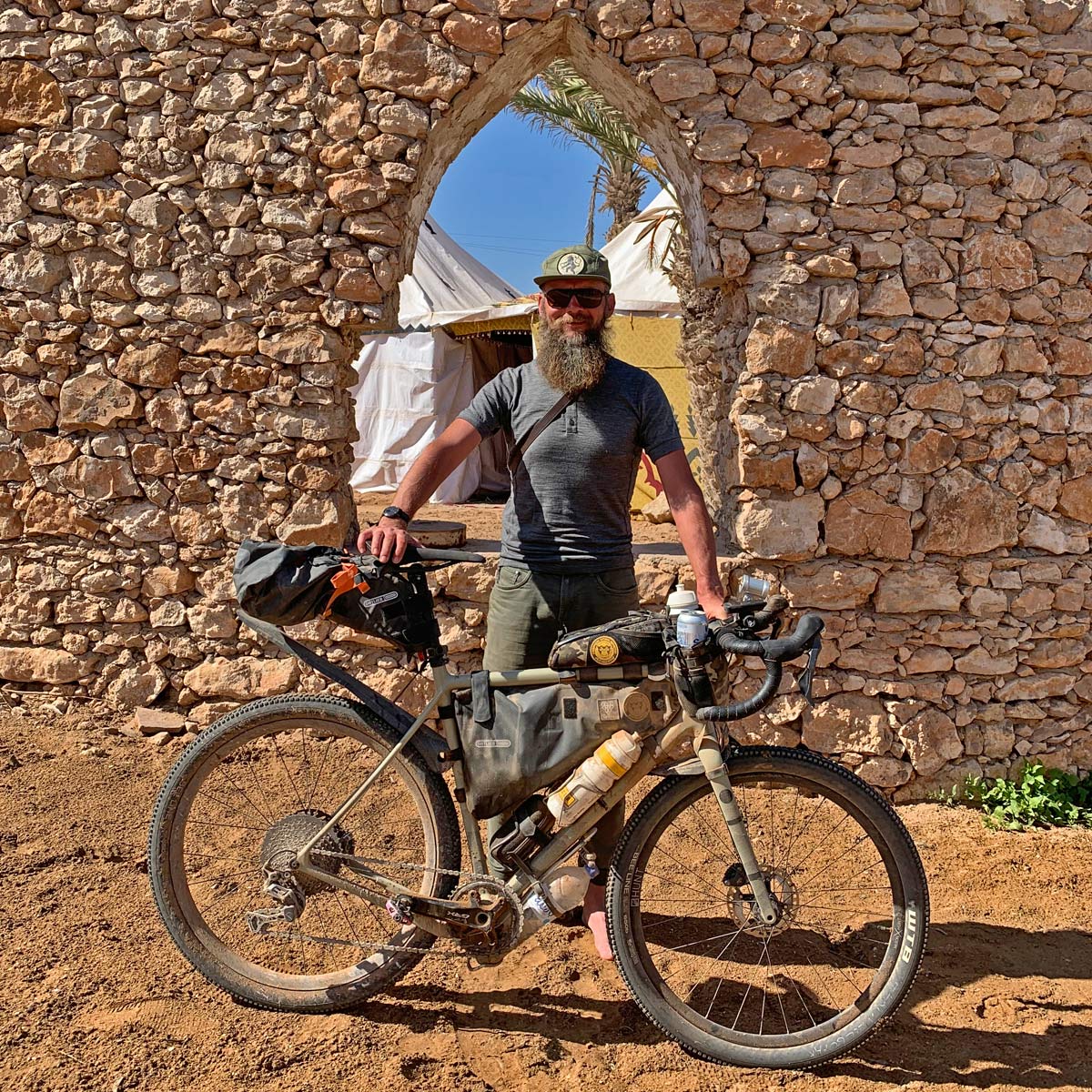
Our man on the ground – Vendelín Ondřej Veselý of Chimpanzee Nutrition, aka The Chimp – opted for full carbon, 650b wheels with 2.2″ hard to fin WTB Bee Line mountain bike tires, ENVE carbon cockpit, and a mix of Gramm, Ortlieb, Acepac & Restrap bikepacking bags.
For a more detailed look at his customized OPEN Wi.De. Detour setup and why he chose it, read on AMR Part 1 here.
The prevailing setup at AMR seems to have been rigid carbon gravel bikes (a third of those The Chimp snapped for us at the finish), ranging from the all-road racy Basso Palta…
…to the ever-popular aero gravel 3T Exploro, which gravellers love to custom paint as well.
Plus, a few Salsa Cutthroats, Vendelin’s Open WiDe, an Open Up, and a Cervelo Aspero.
The occasional full carbon Lauf True Grit with its short travel Lauf Grit SL leaf spring fork offered some respite from the brutally rocky Atlas Mountain terrain.
The Lauf fork also popped up on some other bikes for the same effect, like this custom steel frame from Lovelo Cycle Works in the UK.
Another good portion of the bikes in our mid-pack finishers were proper 29er mountain bikes with short travel suspension forks. The Chimp didn’t spot them at the finish line, but there were a few short travel full-suspension bikes there, too. All of those we spotted were carbon XC race bikes from the likes of Cannondale, Scott & Specialized. Riders who finished on rigid bikes and those with more narrow tires were definitely eyeing the XC bikes and wonder if they were a better option for a track as tough as AMR.
A couple of rigid steel bike made their appearance, ranging from the likes of this custom Breadwinner G-Road…
…to one being a modern classic lugged steel bike of another friend of Bikerumor’s Jon Woodruff, who had its Dutch framebuilder Lester recently recraft the bike with a new rear triangle adding room for bigger tires after Jon rode the same bike two years ago at the Silk Road Mountain Race.
Steel bikes were quite common actually, most from custom frame builders like Bonanno, Pegoretti & Shand paired to carbon forks, plus a few production bikes like this Brother and a Tout Terrain too.
Titanium bikes are quite a similar deal, with custom setups from super small builders like these Myrad & Reilly bikes that added carbon forks & big wheels to take advantage of that butter ti ride.
Update: Want to know more about this bike’s 4L CrankTank hydration reservoir? We dive deep into its affordable, lightweight & efficient details here.
You didn’t need a super premium bike to finish AMR, though. There were plenty of more affordable aluminum bikes with carbon forks, like these from Cannondale, Felt, Kinesis, Liteville, Koga & more.
Bikepacking bags & other hauling options
Pretty much every bike was fitted with big bikepacking bag setups including saddle packs, frame bags, and handlebar packs, including every brand you know and some we hadn’t even heard of… Acepac, Apidura, Arkel, Broad Fork, Deuter, Gilles Berthoud, Gramm, Miss Grape, Ortlieb, Polaris, Porcelain Rocket, PRO (Shimano), Rapha, Restrap, Revelate, Rogue Panda, Schmidt, Specialized, Topeak, and Wildcat – with several custom bags on tour. Apidura, Ortlieb & Revelate were probably the most common as some of the most established in the market and ones we’ve had great experience with in the past, too!
But variety came in almost on every bike – mixing and matching brands to get the perfect personalized setup, then throwing in bar bottle bags, extra fork mounted bags and anywhere from three to five water bottle cages per bike.
Varied cockpit setups: flat bar, drop bar & aero bars
Only the mountain bikes ended up with flat bars (and not even all of them), while pretty much every gravel bike & monster crosser was sporting some form of drop bars, whether traditional or flared. More hand positions were the driver for most riders, so flat or drops, more than a third of the riders had fitted aero bars to be able to shift their weight forward and give hands a rest. Vendelín didn’t have them and felt fine on the ride, but after returning home noticed temporary numbness/tingling that aero bars likely could have prevented.
Other bikepacking adventure setup oddities
Beyond debating whether a mountain bike was more appropriate, there we some less common setups like this Tout Terrain with a Pinion gearbox and Gates drivetrain to eliminate any worries about bashing derailleurs on rocks or dust contamination.
Or this alloy Liteville 4-One which looks like your regular aluminum gravel bike, but hides its mountain bike roots inside with a neatly integrated Eightpins dropper seatpost. (Btw, winner Sofiane Sehili did ride a rigid carbon Niner hardtail with a flat bar plus aero bars and no bar pack, because who needs a tent & sleeping bag if you never sleep!)
Parting thought on the perfect Adventure Racing bike setup
That’s pretty much it, what’s the best bike to endure the rigors of off-road adventure racing?
The Chimp says pick the biggest, fast-rolling gravel or mountain bike tires that will fit in whatever bike you already have whether 650b/27.5 or 700c/29er, then as many hand positions as possible, enough water to survive between refueling stops (plus some extra), lights & GPS that ideally charge while you ride, and the lightest sleeping & bikepacking bag setup that you already are comfortable with.
Best not to try many new things out on when you are on your own in a foreign desert!
